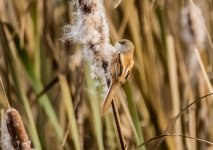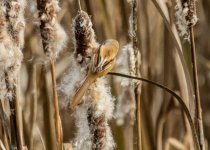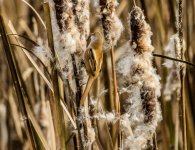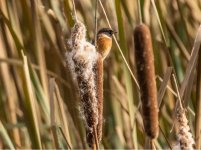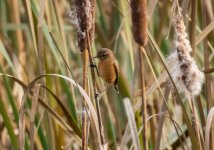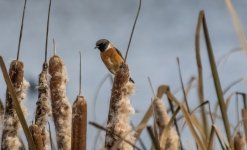November closes with
90 species recorded excluding Feral Pigeon and Ruddy Shelduck. I have taken records from social media (except Facebook), logbooks, word of mouth as well as Birdtrack and eBird. The list below and narrative is by no means exhaustive so any additional records (or corrections!) are more than welcome to give a clearer picture and at some point can be included in future annual reports when these get going again.
| Species | November 2022 |
| Barn Owl | 1 |
| Bearded Tit | 1 |
| Black-headed Gull | 1 |
| Blackbird | 1 |
| Blackcap | 1 |
| Blue Tit | 1 |
| Bullfinch | 1 |
| Brambling | 1 |
| Buzzard | 1 |
| Canada Goose | 1 |
| Carrion Crow | 1 |
| Cetti's Warbler | 1 |
| Chaffinch | 1 |
| Chiffchaff | 1 |
| Coal Tit | 1 |
| Collared Dove | 1 |
| Common Gull | 1 |
| Coot | 1 |
| Cormorant | 1 |
| Curlew | 1 |
| Dunlin | 1 |
| Dunnock | 1 |
| Fieldfare | 1 |
| Gadwall | 1 |
| Goldcrest | 1 |
| Goldfinch | 1 |
| Golden Plover | 1 |
| Great Crested Grebe | 1 |
| Great Spotted Woodpecker | 1 |
| Great Tit | 1 |
| Green Sandpiper | 1 |
| Green Woodpecker | 1 |
| Greenfinch | 1 |
| Grey Heron | 1 |
| Grey Wagtail | 1 |
| Greylag Goose | 1 |
| Goosander | 1 |
| Herring Gull | 1 |
| Jackdaw | 1 |
| Jay | 1 |
| Kestrel | 1 |
| Kittiwake | 1 |
| Kingfisher | 1 |
| Lapwing | 1 |
| Lesser Black-backed Gull | 1 |
| Lesser Redpoll | 1 |
| Linnet | 1 |
| Little Egret | 1 |
| Little Grebe | 1 |
| Long-tailed Tit | 1 |
| Magpie | 1 |
| Mallard | 1 |
| Meadow Pipit | 1 |
| Mistle Thrush | 1 |
| Moorhen | 1 |
| Mute Swan | 1 |
| Nuthatch | 1 |
| Peregrine | 1 |
| Pheasant | 1 |
| Pied Wagtail | 1 |
| Pintail | 1 |
| Pochard | 1 |
| Raven | 1 |
| Red Kite | 1 |
| Red-legged Partridge | 1 |
| Redwing | 1 |
| Reed Bunting | 1 |
| Robin | 1 |
| Rock Pipit | 1 |
| Rook | 1 |
| Shelduck | 1 |
| Shoveler | 1 |
| Siskin | 1 |
| Skylark | 1 |
| Snipe | 1 |
| Song Thrush | 1 |
| Sparrowhawk | 1 |
| Starling | 1 |
| Stock Dove | 1 |
| Stonechat | 1 |
| Tawny Owl | 1 |
| Teal | 1 |
| Treecreeper | 1 |
| Tufted Duck | 1 |
| Water Rail | 1 |
| Wigeon | 1 |
| Wood Pigeon | 1 |
| Wren | 1 |
| Yellow-legged Gull | 1 |
| Yellowhammer | 1 |
| |
| Other; | 90 |
| Ruddy Shelduck | 1 |
Notable records were;
Dunlin – 8 were noted briefly at the Flashes on the 15th November with an additional single bird at the Moors which lingered for the rest of the day.
Bearded Tit – a female was first seen from the East Hide at the Moors on the morning of the 13th November. There were subsequent records for the remainder of the month, mainly from the Concrete and West hides of a single bird, 2 birds and a single record of a male on the 25th November. At least one female bird continues to be present, mainly showing during calm sunny weather from the Concrete Hide, although undoubtably it moves around the reserve, with reports from the North Moors and East side. An excellent record adding to the life list of a number of Birders for the reserve.
Goosander – a male and female have been reasonably regular briefly at the Flashes. Occasional singles have also been recorded at the Moors, Sailing Pool and as fly overs.
Harrier Spcs – seen at a distance from the Flashes on the 5th November but unable to be identified. In the context of a
Ringtail (female Hen Harrier) having been seen at the Moors on the 30th October this may have been the same bird, but one can only speculate.
Ruddy Shelduck – a female was reported on the 7th November with Greyalg Geese and was showing on and off in the company of the Greylag flock throughout the month, giving good views.
Finches – the first
Brambling of the year was seen at the Moors on the 3rd November associating with the growing finch flock feeding in the A38 bird crop field. The crop planted there by the farmer this year is of a slightly different composition with more wheat and less millet. Nevertheless, as at writing the flock is increasing with up to 250 birds of mainly
Linnet having been recorded at the end of the month. At least 2
Brambling are among them, but numbers of these birds should increase, best picked up by looking at every
Chaffinch and listening out for the call! A
Yellowhammer flew over the Flashes from Sagebury farm direction, being the only record of the month.
Barn Owl – one briefly seen at the Moors on the 15th November at mid-day after a particularly heavy bout of rain.
Tawny Owl is being heard regularly at the Moors during early dawn.
Rock Pipit – again one briefly at the Flashes on the afternoon of the 21st November brought down by heavy rainfall.
Kittiwake – Upton Warren has also been benefiting from the recent large-scale movement of Kittiwake, presumably weather related. An adult winter bird was found on the Sailing Pool on the 24th November. On the afternoon of the same day a second bird appeared at the Flashes. A single bird was subsequently visiting the Sailing Pool and Moors, either the same bird or one from Westwood Pool. Either way, another welcome addition to a dull Novembers birding of this subtlety beautiful bird.
On a general note,
Curlew numbers have hovered around 8 birds with 9 having been seen being the highest total. The Curlew named Tim and tagged ‘AT’ is still just north of Weston-Super-Mare presumably with other birds feeding on the mudflats
Lapwing numbers are around 250 plus at the Flashes with a single
Golden Plover on the 14th November and hopefully the number of Lapwing will build over winter.
Green Sandpiper have continued to linger with up to 5 birds reported at the Flashes. Up to 2
Common Gull have been seen regularly across the reserve and the occasional
Yellow-legged Gull during mornings with other larger gulls. Up to 2
Chiffchaff and 4
Blackcap were still present early to mid-month and 3
Red-legged Partridge were visible on the fence at the west track on the 6th November, presumably from the adjoining A38 bird crop field. A few records of
Red Kite were noted and up to 4
Stonechat are reported daily across the reserve. Finally, an impressive 136
Pied Wagtail were counted coming out of roost early morning from the Moors on the 20th November.











